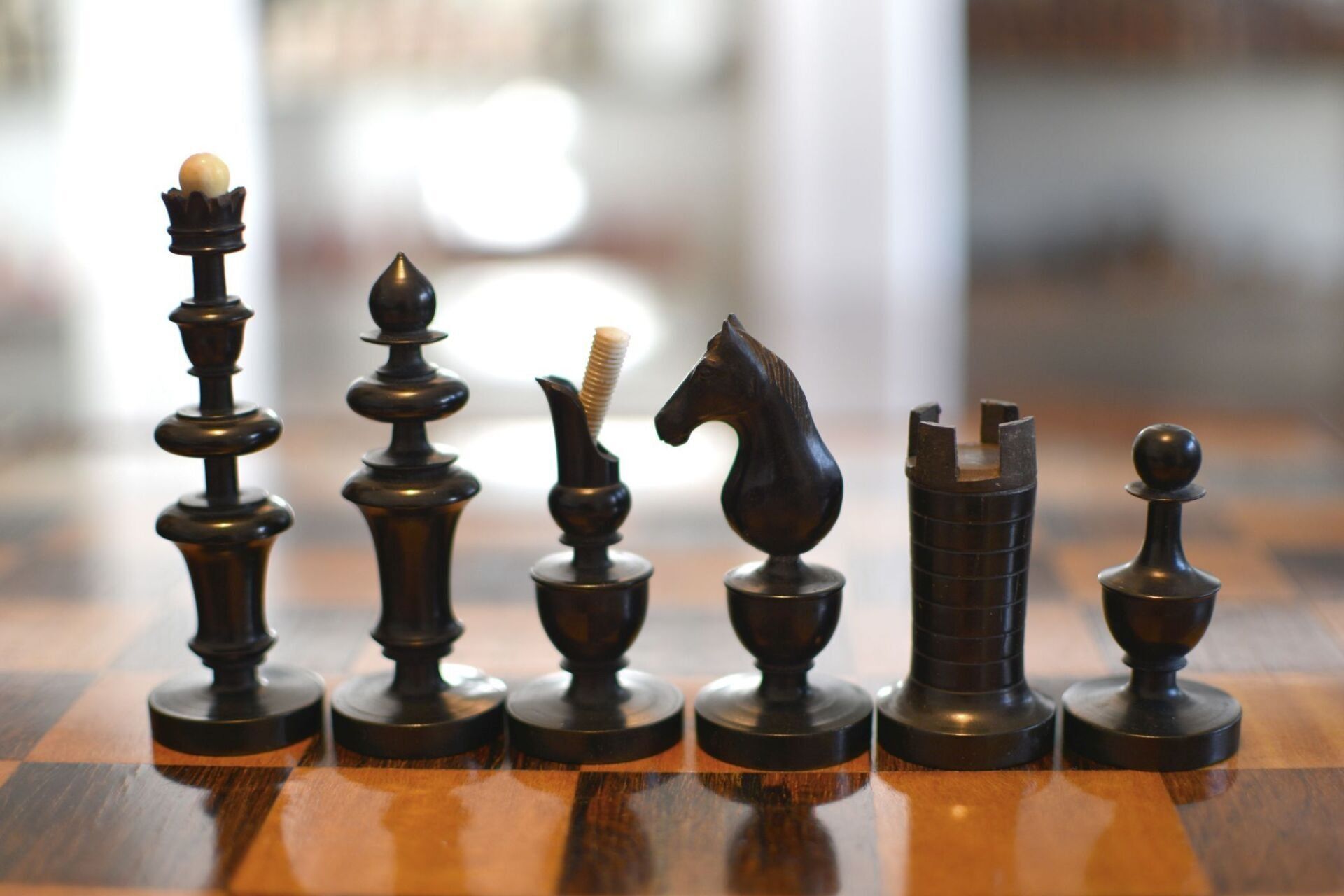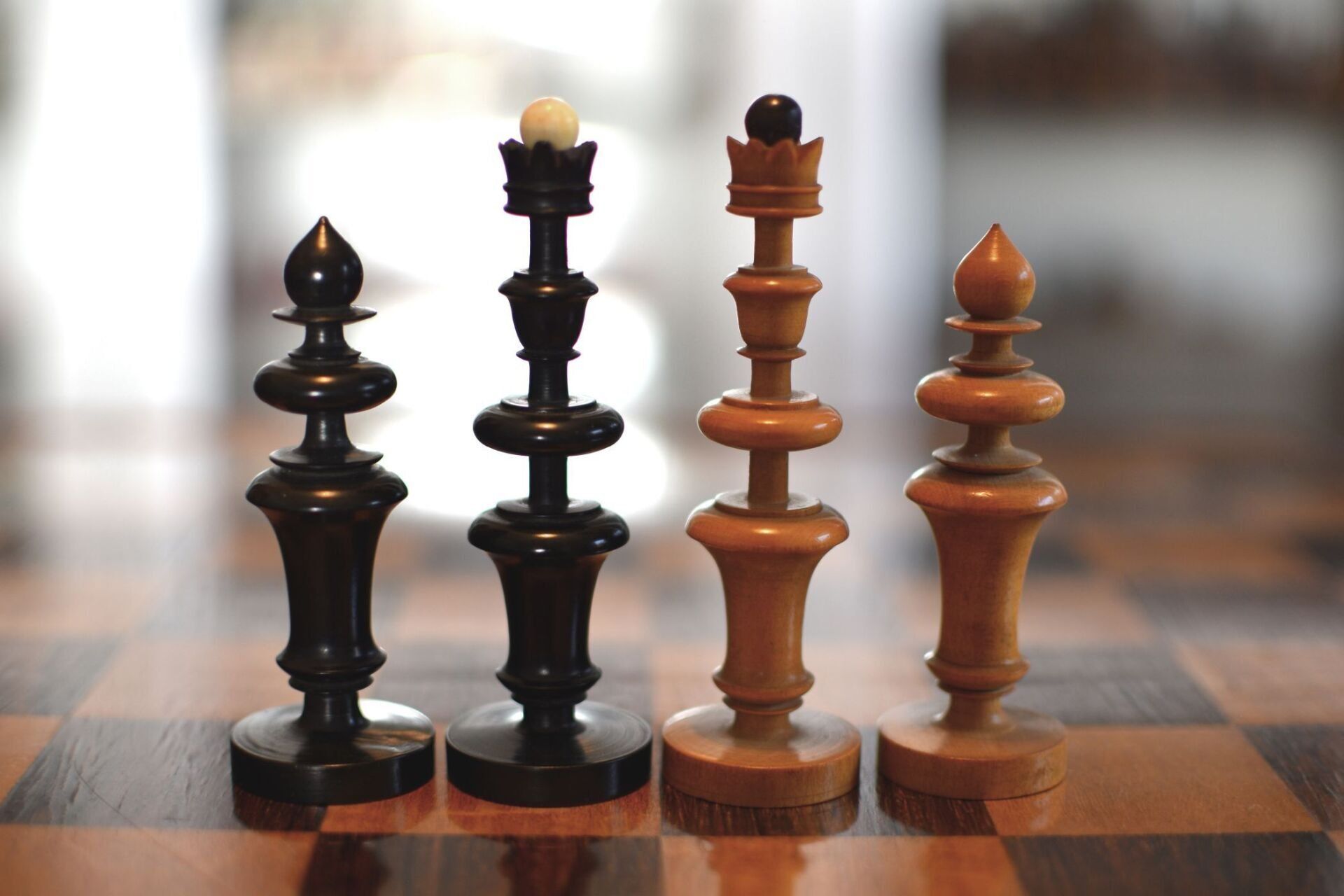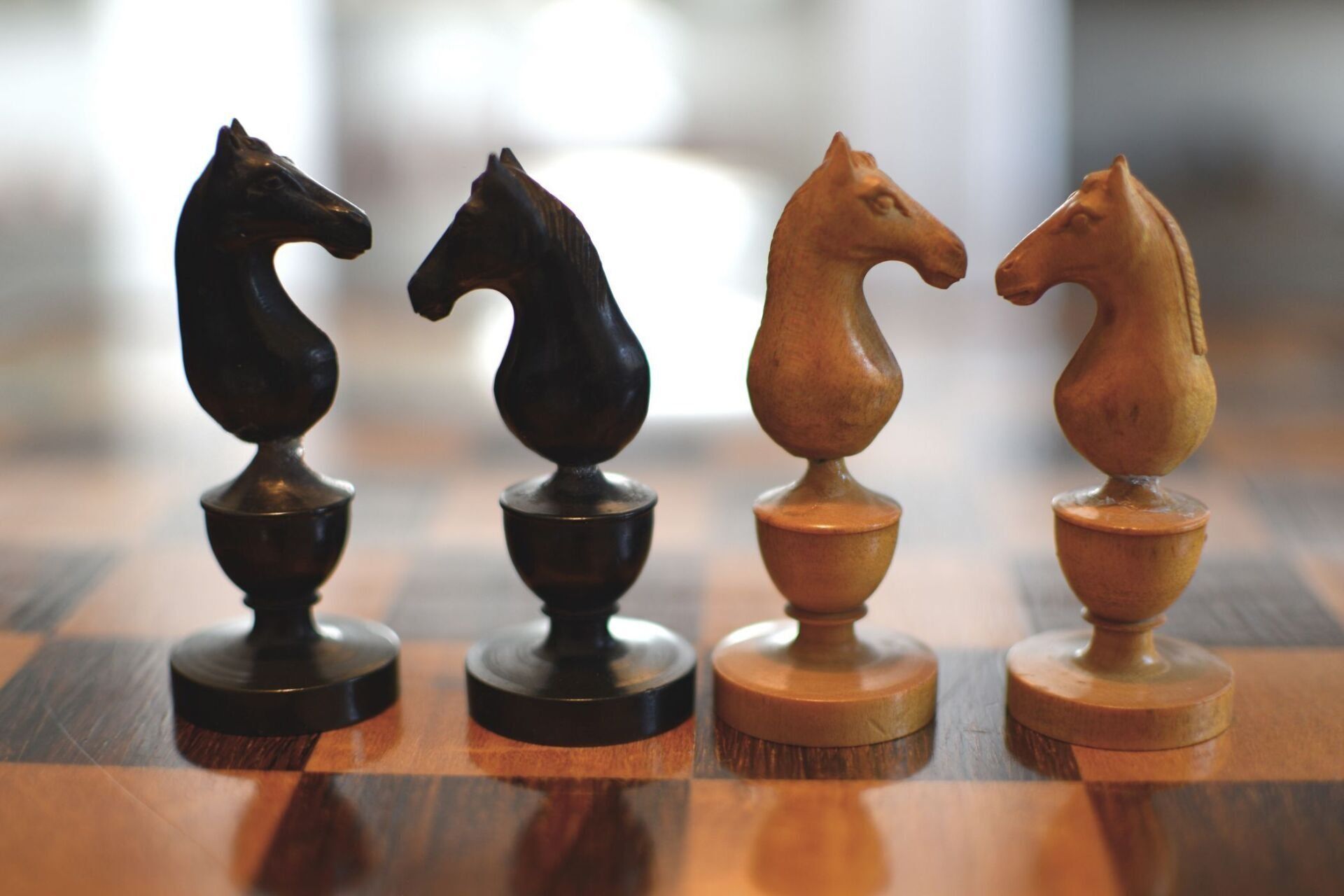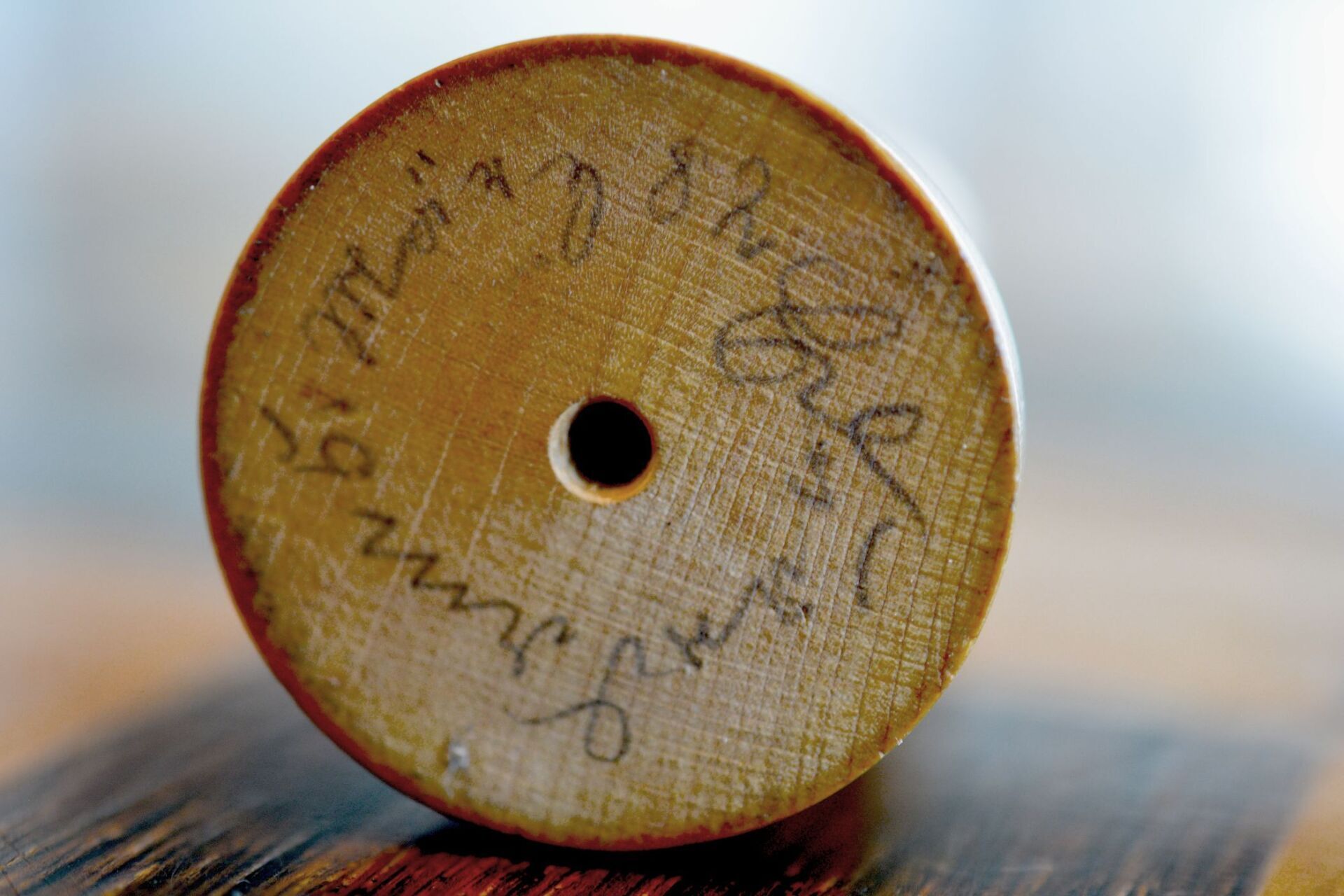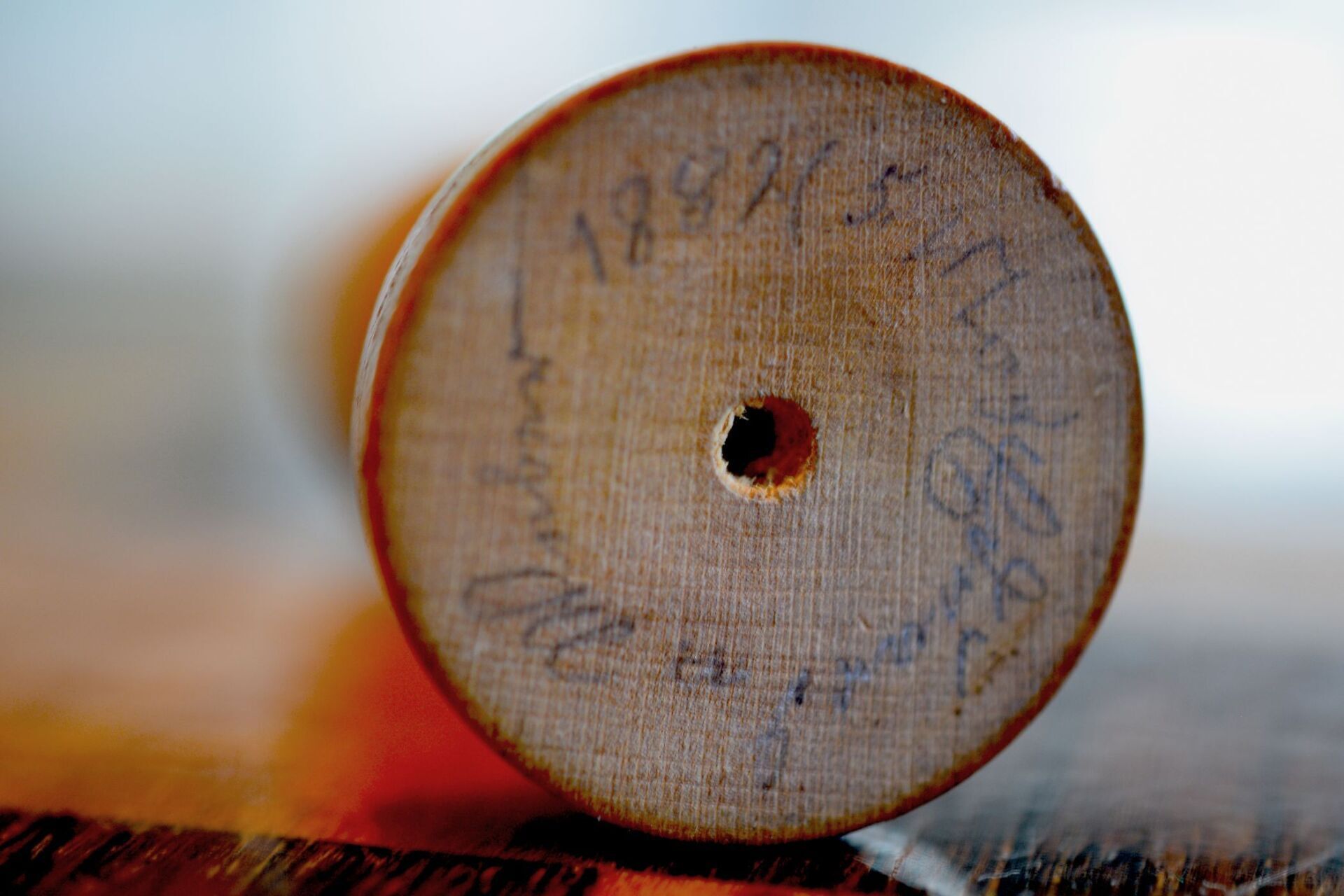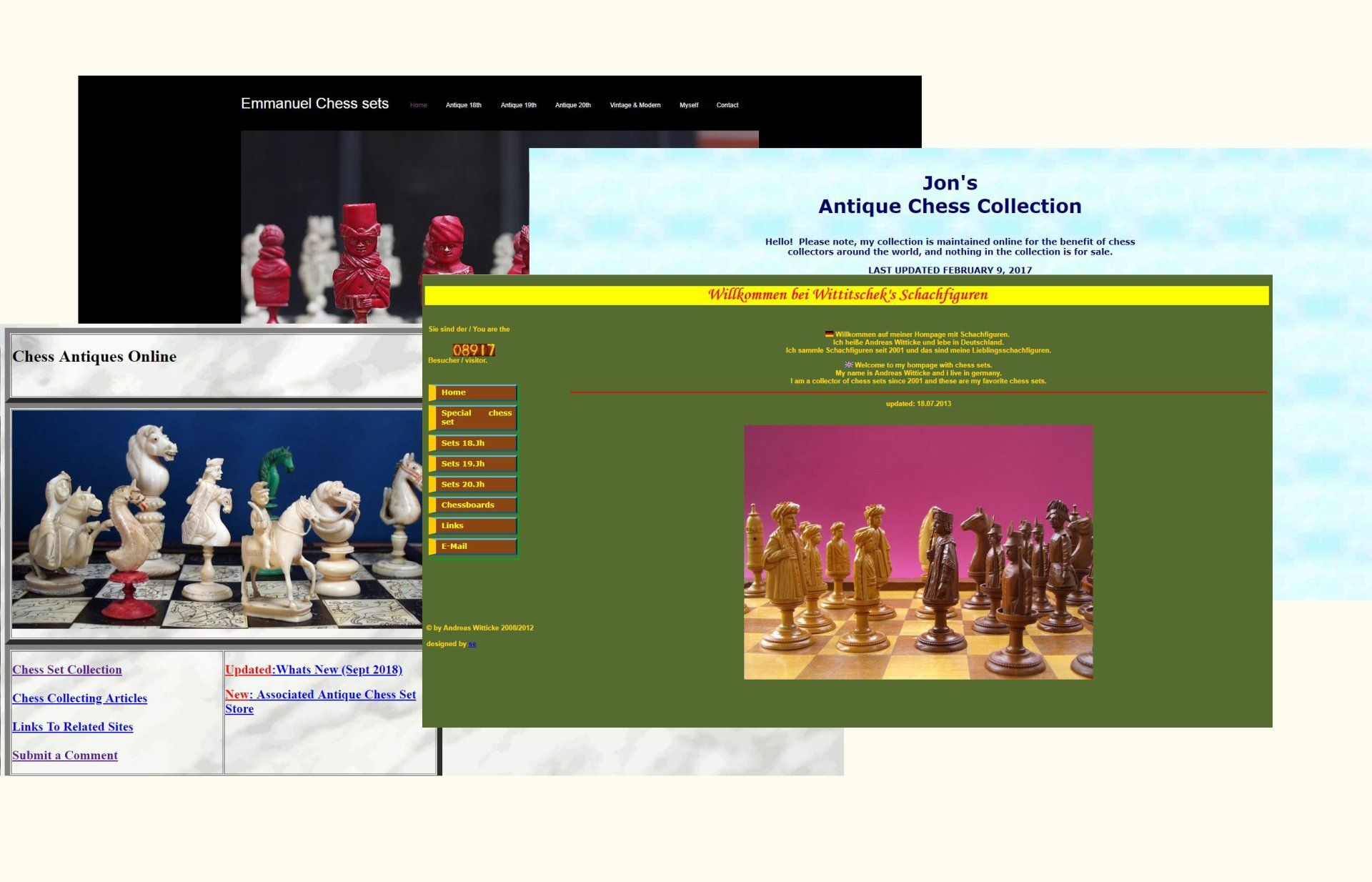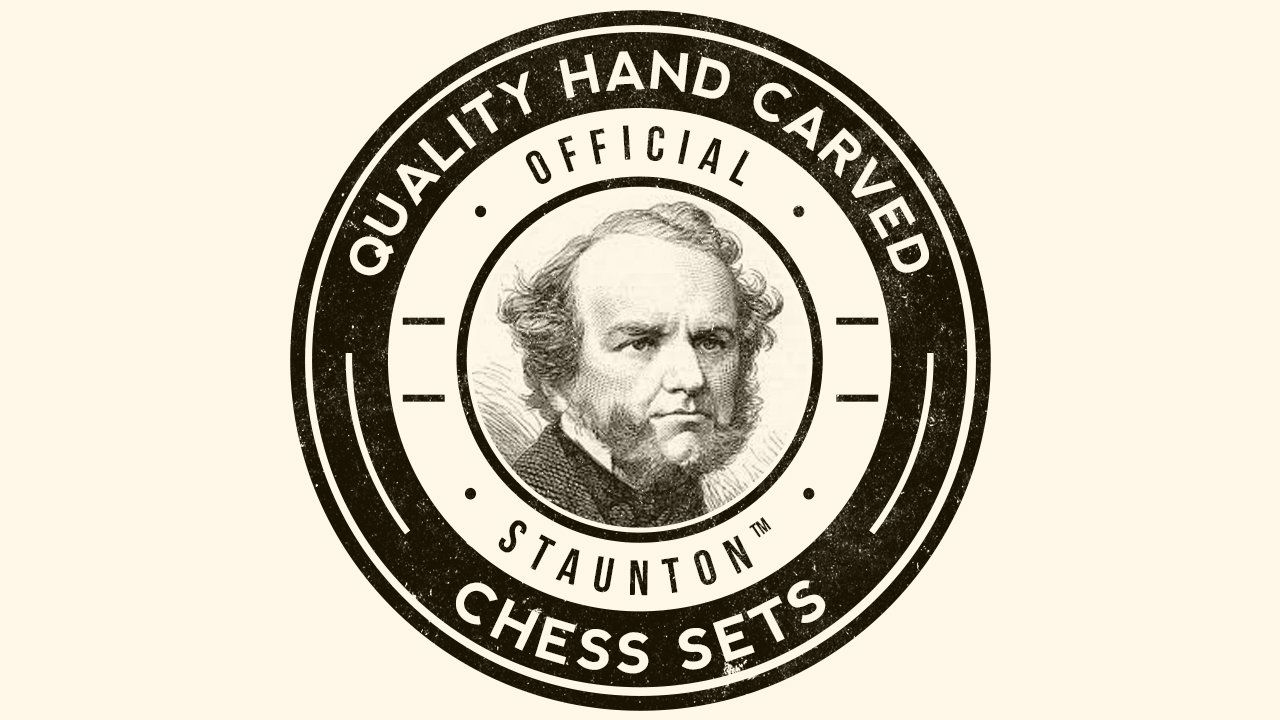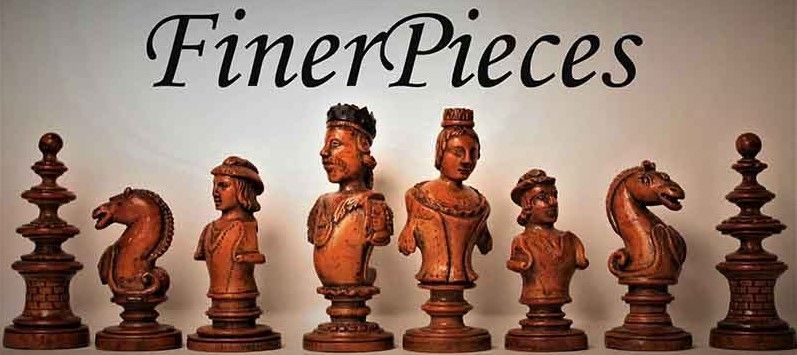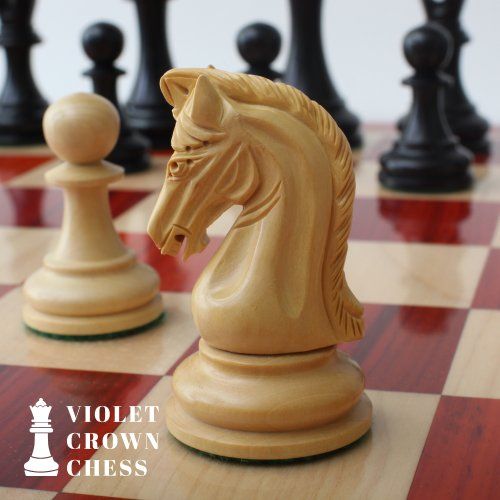South German / Austrian Chess Set, 1882
A wooden chess set, presumably from South Germany or Austria. The white pieces are made of boxwood, the black pieces of ebony. The king size is 97 mm (3.8"). The kings of unusual shape with slender shafts on an elongated baluster base topped with a circular crown and a ball finial in the opposite colour, on the white king made of wood dyed in dark brown, on the black king made of bone. The queens of smaller size and with a drop shaped head instead of a crown. The bishops show a very close resemblance with bishops from the early Biedermeier period, i.e. with lyre shaped heads and an elongated feather (in this also resembling feathered high hats common for certain officers in the 19th century military, see here). The knights as elegantly carved horses. The rooks as turrets with carved brickwork and four elongated crenellations. The pawns with baluster bases and a ball finial. All pieces on circular bases.
The similarity with sets of the Biedermeier period might lead to the conclusion that this set was made sometime in the first half of the 19th century, but this assumptions is in this case unjustified. Several pieces have pencil inscriptions written on the bases in Kurrent, which is also known as "German script" or "German cursive". Two of these inscriptions show the date 15 March 1882 ("15. März 82" and "1882 / 5. März"). Further, the same pieces are inscribed with a name, which to me reads "Eduard Kleber" or in the inverted version with the last name first "Kleber Eduard".

